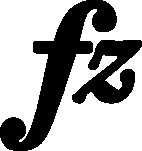



|
b. 5
|
composition: Op. 25 No 6, Etude in G♯ minor
..
The chromatic third progression has two fingering versions in the sources:
category imprint: Differences between sources issues: Annotations in teaching copies , Annotations in FED , Differences in fingering , Authentic corrections of FE |
|||||||||||
|
b. 5-19
|
composition: Op. 26 No 1, Polonaise in C♯ minor
..
In the entire Polonaise GE2 (→GE3→GE4→GE5) arbitrarily changed the characteristic for Chopin category imprint: Differences between sources issues: GE revisions |
|||||||||||
|
b. 5
|
composition: Op. 25 No 7, Etude in C♯ minor
category imprint: Differences between sources |
|||||||||||
|
b. 5
|
composition: Op. 25 No 7, Etude in C♯ minor
..
The authenticity of the 3rd fingering numeral in FE does not raise any doubts, however, it is not certain whether it was added in the base text to FE already after GC and base text to EE had been prepared or added in the proofreading of FE. The triple use of the 1st finger in a very similar melodic and piano performance context appears in the Etude in G category imprint: Differences between sources |
|||||||||||
|
b. 5
|
composition: Op. 25 No 8, Etude in D♭ major
..
We do not give the fingering numeral written in FES in the main text, as it was included in the fingering in bar 1. category imprint: Differences between sources |





 indication to
indication to .png) (hardly ever used by the composer) – on this page in bars 5 and 18-19.
(hardly ever used by the composer) – on this page in bars 5 and 18-19.




 minor, No. 6, bars
minor, No. 6, bars 
